2010 NY Slip Op 51664(U)
DEUTSCHE BANK TRUST COMPANY AMERICAS AS TRUSTEE, Plaintiff(s),
v.
DEREK McCOY; EDYTA McCOY; MORTGAGE ELECTRONIC REGISTRATION SYSTEMS, INC. AS NOMINEE FOR HOMECOMINGS FINANCIAL, LLC, (F/K/A HOMECOMINGS FINANCIAL NETWORK, INC.) BOARD OF MANAGERS OF THE SILVER CHASE CONDOMINIUM; “JOHN DOE #1-5 AND “JANE DOE #1-5” SAID NAMES BEING FICTITIOUS, IT BEING THE INTENTION OF Plaintiff TO DESIGNATE ANY AND ALL OCCUPANTS, TENANTS, PERSONS OR CORPORATIONS, IF ANY, HAVING OR CLAIMING AN INTEREST IN OR LIEN UPON THE PREMISES BEING FORECLOSED HEREIN, Defendant(s).
7782-2008. Supreme Court, Suffolk County.
Decided September 21, 2010. Fein, Such & Crane, LLP, 747 Chestnut Ridge Road, Chestnut Ridge, New York 10977-6216, Attorneys for Plaintiff.
Derek McCoy, Edyta McCoy, 35 Gibbs Road, Coram, New York 11727, Defendants Pro Se.
PETER H. MAYER, J.
UPON DUE DELIBERATION AND CONSIDERATION BY THE COURT of the foregoing papers, the motion is decided as follows: it is
ORDERED that plaintiff’s resubmitted application (seq. # 002) for an order of reference in this foreclosure action is considered under 2009 NY Laws, Ch. 507, enacted December 15, 2009, and 2008 NY Laws, Ch. 472, enacted August 5, 2008 (as amended), as well as the related statutes and case law, and is hereby denied without prejudice, and with leave to resubmit upon proper papers, for the reasons set forth herein; and it is further
ORDERED that, inasmuch as the plaintiff has failed to properly show that the homeowner-defendants are not entitled to a foreclosure settlement conference, pursuant to CPLR 3408 such conference is hereby scheduled for November 17, 2010, 9:30 a.m., in the courtroom of the undersigned, located at Room A-259, Part 17, One Court Street, Riverhead, NY 11901 (XXX-XXX-XXXX), for the purpose of holding settlement discussions pertaining to the rights and obligations of the parties under the mortgage loan documents, including but not limited to, determining whether the parties can reach a mutually agreeable resolution to help the defendant avoid losing their home, and evaluating the potential for a resolution in which payment schedules or amounts may be modified or other workout options may be agreed to, and for whatever other purposes the Court deems appropriate; and it is further
ORDERED that “Sherry Hall,” who purports, in this particular case, to be the Vice President of Homecomings Financial Network, Inc., the purported attorney-in-fact for the plaintiff, shall appear at the November 17, 2010 Foreclosure Settlement Conference; and it is further
ORDERED that “Nikole Shelton,” the individual who purportedly notarized Ms. Hall’s signature in this particular action, as well as in the action entitled GMAC Mortgage, LLC v Ingoglia, under Suffolk County Index Number XXXX-XXXX, shall appear at the November 17, 2010 Conference; and it is further
ORDERED that any attorney appearing at the conference on behalf of the plaintiff (including a per diem attorney) shall, pursuant to CPLR 3408, be fully authorized to dispose of the case; and it is further
ORDERED that the plaintiff shall bring to all future conferences all documents necessary for evaluating the potential settlement, modification, or other workout options which may be appropriate, including but not limited to the payment history, an itemization of the amounts needed to cure the default and satisfy the loan, and the mortgage and note; if the plaintiff is not the owner of the mortgage and note, the plaintiff shall provide the name, address and telephone number of the legal owner of the mortgage and note; and it is further
ORDERED that the plaintiff shall promptly serve, via first class mail, a copy of this Order upon the homeowner-defendants at all known addresses (or upon their attorney if represented by counsel), as well as upon all other appearing parties, and shall provide the affidavit(s) of such service to the Court at the time of the scheduled conference, and annex a copy of this Order and the affidavit(s) of service as exhibits to any future applications submitted to the Court; and it is further
ORDERED that in the event any scheduled court conference is adjourned for any reason, the plaintiff shall promptly send, via first class mail, written notice of the adjourn date to the homeowner-defendants at all known addresses (or upon their attorney if represented by counsel), as well as upon all other appearing parties, and shall provide the affidavit(s) of such service to the Court at the time of the subsequent conference, and annex a copy of this Order and the affidavit(s) of service as exhibits to any future applications submitted to the Court; and it is further
ORDERED that with regard to any future applications submitted to the Court, the moving party(ies) must clearly state, in an initial paragraph of the attorney’s affirmation, whether or not the statutorily required foreclosure conference has been held and, if so, when such conference was conducted; and it is further
ORDERED that with regard to any scheduled court conferences or future applications by the parties, if the Court determines that such conferences have been attended, or such applications have been submitted, without proper regard for the applicable statutory and case law, or without regard for the required proofs delineated herein, the Court may, in its discretion, strike the non-compliant party’s pleadings or deny such applications with prejudice and/or impose sanctions pursuant to 22 NYCRR §130-1, and may deny those costs and attorneys fees attendant with the filing of such future applications.
In this foreclosure action, the plaintiff filed a summons and complaint on February 26, 2008. The complaint essentially alleges that the homeowner-defendants, Derek McCoy and Edyta McCoy, defaulted in payments with regard to a December 8, 2006 mortgage in the principal amount of $288,000.00 for the premises located at 35-34 Gibbs Road, Coram, New York 11727. The original lender, Homecomings Financial, LLC, had the mortgage assigned to the plaintiff by assignment dated February 28, 2008, two days after the commencement of the action. According to the court’s database, a foreclosure settlement conference has not yet been held. The plaintiff’s application seeks a default order of reference and requests amendment of the caption to remove the “Doe” defendants as parties. Plaintiff’s counsel contends that the “present application corrects the specified defects articulated in the [December 4, 2008]Short Form Order.” Notwithstanding counsel’s contention, plaintiff’s current application fails to correct several defects, and presents other grounds which preclude an order of reference in favor of the plaintiff.
By Order dated December 4, 2008, the plaintiff’s prior application for the same relief was denied without prejudice, and with leave to resubmit upon proper papers, to allow the plaintiff to properly show whether or not the subject loan is a “subprime home loan” or a “high-cost home loan” as defined by statute, thereby entitling the defendants to a foreclosure settlement conference pursuant to the then-applicable 2008 NY Laws, Chapter 472. In this regard, the plaintiff’s attorney has submitted a letter in which he claims that it is his “belief that the mortgage being foreclosed is not a sub-prime home loan and is not subject to the [foreclosure conference] requirements.” Counsel also submits an Affirmation of Compliance with CPLR 3408, which states that “[w]e have determined that this loan is not subprime,” and that the defendants “are not entitled to a court conference” (emphasis in original).
Despite counsel’s assertions, the plaintiff’s own affidavit of merit states that “[w]e have determined that this loan is subprime” and that “the defendants are entitled to court conference” (emphasis added). The direct contradiction between counsel’s “belief” and the assessment of one whose affidavit states, as in this case, that she has “first-hand knowledge of the facts and circumstances surrounding this action,” validates this Court’s approach in refusing to accept counsel’s assertions as fact in any given foreclosure action. The mistaken “belief” of an attorney who has no personal knowledge of the facts, yet opines in court documents that a homeowner-defendant is not entitled to a statutorily required court conference, may prejudice the homeowner’s rights while subjecting the attorney to otherwise avoidable court sanctions. Since the plaintiff has failed to adequately show that the homeowner-defendants are not entitled to a foreclosure settlement conference, such conference shall be held on November 17, 2010, 9:30 a.m.
The Court’s December 4, 2008 Order also specifically stated that “[w]ith regard to any future applications … plaintiff’s papers shall include … evidentiary proof of compliance with the requirements of CPLR §3215(f), including but not limited to a proper affidavit of facts by the plaintiff [or by plaintiff’s agent, provided there is proper proof in evidentiary form of such agency relationship], or a complaint verified by the plaintiff and not merely by an attorney or non-party, such as a servicer, with no personal knowledge.”
In an apparent effort to satisfy the requirements of CPLR §3215(f), the plaintiff submits an affidavit of merit from “Sherry Hall,” who purports in this particular case to be the Vice President of Homecomings Financial Network, Inc. (“Homecomings”), the purported attorney-in-fact for the plaintiff. The Limited Power of Attorney annexed to the affidavit, however, does not name Homecomings as the attorney-in-fact. Instead, it names Residential Funding Company, LLC. Therefore, the Court cannot conclude that the affidavit was “made by the party” as required by CPLR §3215(f) (emphasis added). Notably, the instructions on the power-of-attorney form also require the form to be recorded and returned not to the plaintiff bank, nor to Homecomings as the purported attorney-in-fact, but rather to “GMAC ResCap.” This raises certain concerns, particularly given the nature of the affidavit of merit submitted in this case, as compared to the affidavit of merit submitted to the Court by the same attorneys in an unrelated foreclosure matter, GMAC Mortgage, LLC v Ingoglia, under Suffolk County Index Number XXXX-XXXX.
In the Ingoglia case (which was recently discontinued), counsel submitted an affidavit of merit from “Sheri D. Hall” in her purported capacity as Vice President of GMAC Mortgage, LLC. That affidavit was notarized by Nikole Shelton on April 14, 2009. Just weeks earlier, on March 25, 2009, Ms. Shelton notarized an affidavit of merit from “Sherry Hall” in this case, in which Ms. Hall purports to be Vice President of Homecomings. It would appear, therefore, that Ms. Hall purports to be the Vice President of two different banks almost simultaneously. Furthermore, although the affidavit in this case appears to have been notarized by Ms. Shelton on March 25, 2009, it appears to have been signed by Ms. Hall five (5) days later, on March 30, 2009, after it was notarized.
The “Hall” affidavit in each case is accompanied by a Certificate of Acknowledgment notarized by “Nikole Shelton” in Montgomery County, Pennsylvania. Both Certificates state that the individual executing the affidavits “personally appeared” before Nikole Shelton. Both state that the affiant was “personally known to [Nikole Shelton] or proved to [Nikole Shelton] on the basis of satisfactory evidence to be the individual whose name is subscribed to the [affidavit].” Notwithstanding these assertions by Ms. Shelton in both cases, the affidavit submitted to the Court in Ingoglia was executed by one who printed and signed her name as “Sheri D. Hall,” while the affidavit submitted in this case was executed by one who printed and signed her name as “Sherry Hall.” Although the Court cannot function as a handwriting expert, the signatures in both affidavits appear virtually identical, despite the difference in the two names.
These facts raise questions concerning the true identity and veracity of the person signing the affidavits of merit, who swears to be the Vice President of two different banks almost simultaneously, as well as the veracity of Nikole Shelton, in notarizing both signatures. Accordingly, “Sherry Hall,” who submitted the affidavit of merit in this case, and “Nikole Shelton,” who purportedly notarized Ms. Hall’s signature in this case and purportedly notarized the signature of “Sheri D. Hall” in the Ingoglia case, shall appear at the November 17, 2010 conference, so the Court may determine whether or not it must conduct an evidentiary hearing on these issues.
Concerning assignment of the subject mortgage, this Court’s December 4, 2008 Order specifically required any resubmitted motion to include “evidentiary proof, including an affidavit from one with personal knowledge, of proper and timely assignments of the subject mortgage, if any, sufficient to establish the plaintiff’s ownership of the subject note and mortgage at the time the action was commenced, and that the assignment is not merely an invalid assignment or an assignment with an ineffectual retroactive date” (emphasis added). Despite this specific instruction, the plaintiff’s affidavit of merit merely states that the plaintiff “is still the holder of record of the … mortgage.” This statement fails to show that the plaintiff was the holder of the note and mortgage when the plaintiff commenced the action. The plaintiff filed the summons and complaint on February 26, 2008; however, the assignment of the mortgage to the plaintiff from the original lender, Homecomings Financial, LLC, is dated February 28, 2008, two days after the commencement of the action.
Only where the plaintiff is the assignee of the mortgage and the underlying note at the time the foreclosure action was commenced does the plaintiff have standing to maintain the action (U.S. Bank, N.A. v Collymore, 68 AD3d 752, 890 NYS2d 578 [2d Dept 2009]; Federal Natl. Mtge. Assn. v Youkelsone, 303 AD2d 546, 755 NYS2d 730 [2d Dept 2003]; Wells Fargo Bank, N.A. v Marchione, 69 AD3d 204, 887 NYS2d 615 [2d Dept 2009]; First Trust Natl. Assn. v Meisels, 234 AD2d 414, 651 NYS2d 121 [2d Dept 1996]). An assignment executed after the commencement of an action, which states that it is effective as of a date preceding the commencement date, is valid where the defaulting defendant appears but fails to interpose an answer or file a timely pre-answer motion that asserts the defense of standing, thereby waiving such defense pursuant to CPLR 3211[e] (see, HSBC Bank, USA v Dammond, 59 AD3d 679, 875 NYS2d 490 1445 [2d Dept 2009]). It remains settled, however, that foreclosure of a mortgage may not be brought by one who has no title to it and absent transfer of the debt, the assignment of the mortgage is a nullity (U.S. Bank, N.A. v Collymore, 68 AD3d 752, 890 NYS2d 578 [2d Dept 2009]; Kluge v Fugazy, 145 AD2d 537, 536 NYS2d 92 [2d Dept 1988]).
Indeed, a plaintiff has no foundation in law or fact to foreclose upon a mortgage in which the plaintiff has no legal or equitable interest (Wells Fargo Bank, N.A. v Marchione, 69 AD3d 204, 887 NYS2d 615 [2d Dept 2009]; Katz v East-Ville Realty Co., 249 AD2d 243, 672 NYS2d 308 [1st Dept 1998]). Either a written assignment of the underlying note or the physical delivery of the note prior to the commencement of the foreclosure action is sufficient to transfer the obligation, and the mortgage passes with the debt as an inseparable incident (U.S. Bank, N.A. v Collymore, 68 AD3d 752, 890 NYS2d 578 [2d Dept 2009]).
Although the February 28, 2008 assignment states it is “effective January 19, 2008,” such attempt at retroactivity is ineffectual. If an assignment is in writing, the execution date is generally controlling and a written assignment claiming an earlier effective date is deficient, unless it is accompanied by proof that the physical delivery of the note and mortgage was, in fact, previously effectuated (see, Bankers Trust Co. v Hoovis, 263 AD2d 937, 938, 694 NYS2d 245 [1999]). A retroactive assignment cannot be used to confer standing upon the assignee in a foreclosure action commenced prior to the execution of the assignment (Countrywide Home Loans, Inc. v Gress, 68 AD3d 709, 888 NYS2d 914 [2d Dept 2009]; Wells Fargo Bank, N.A. v Marchione, 69 AD3d 204, 887 NYS2d 615 [2d Dept 2009]). Plaintiff’s failure to submit proper proof, including an affidavit from one with personal knowledge, that the plaintiff was the holder of the note and mortgage at the time the action was commenced, requires denial of the plaintiff’s application for an order of reference.
In its prior Order, the Court also gave specific directives concerning proof of compliance with RPAPL §1303 and § 1320 for any resubmitted motions. In this regard, the prior Order required “evidentiary proof, including an attorney’s affirmation, of compliance with the form, type size, type face, paper color and content requirements of RPAPL §1303 regarding foreclosure notices, as well as an affidavit of proper service of such notice,” as well as “evidentiary proof, including an attorney affirmation, of compliance with the form, content, type size, and type face requirements of RPAPL §1320 regarding special summonses in residential foreclosure actions, and proof of proper service of said special summons” (emphasis supplied). Despite these very specific directives, the attorney’s affirmation in support of this resubmitted motion fails to address those sections. While the affidavit of service does state that the summons and complaint were served with a Section 1303 notice on colored paper and a Section 1320 notice, such information, by itself, is not proper proof that those notices were compliant with the specific form, content, type size, and type face requirements set forth in those statutes.
Lastly, the Court notes that although service of process was made upon defendant Derek McCoy by substitute service pursuant to CPLR 308(2), the additional mailing required for such service was never completed. Instead, the process server sent the additional mailing to defendant Edyte McCoy who is alleged to have received a copy of the summons and complaint by personal service pursuant to CPLR 308(1). Such personal service does not require an additional mailing to complete service. Based on the foregoing, the plaintiff has established neither completion of service upon the defendant, Derek McCoy, nor jurisdiction of this Court over that defendant.
Based upon the foregoing, the plaintiff’s motion is denied.
This constitutes the Decision and Order of the Court.
[ipaper docId=38861983 access_key=key-szfht6qv85fge3gqrb height=600 width=600 /]
© 2010-19 FORECLOSURE FRAUD | by DinSFLA. All rights reserved.















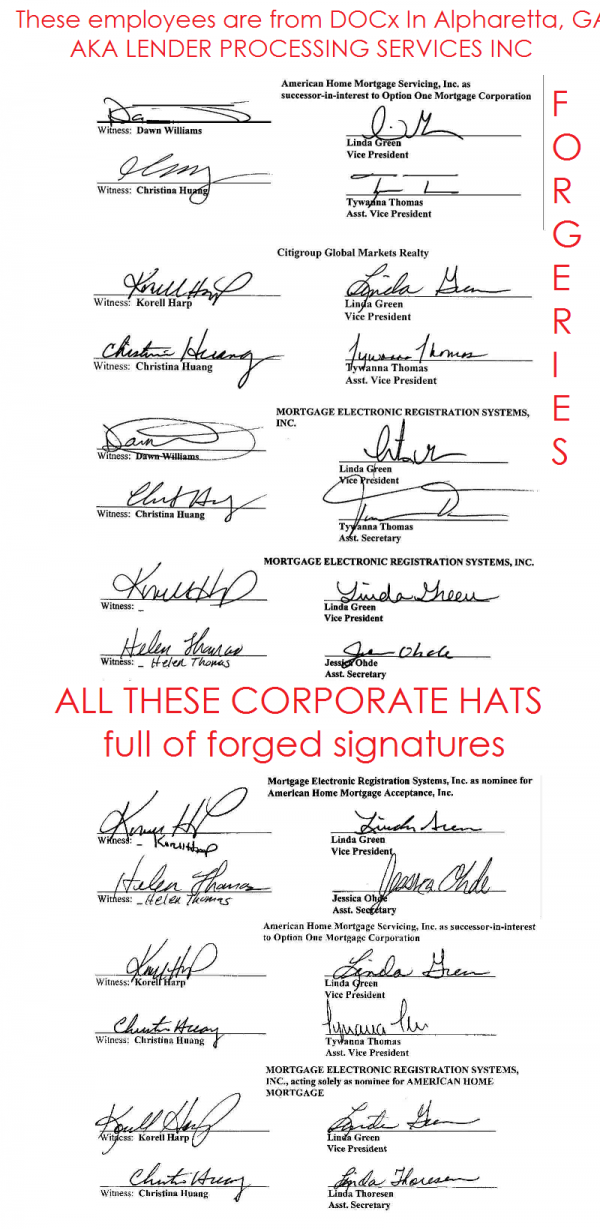


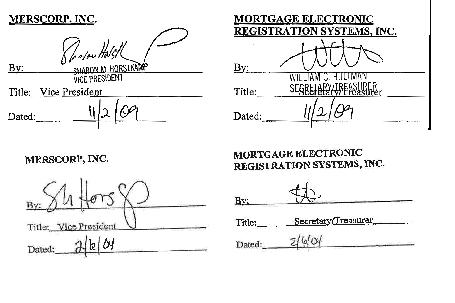





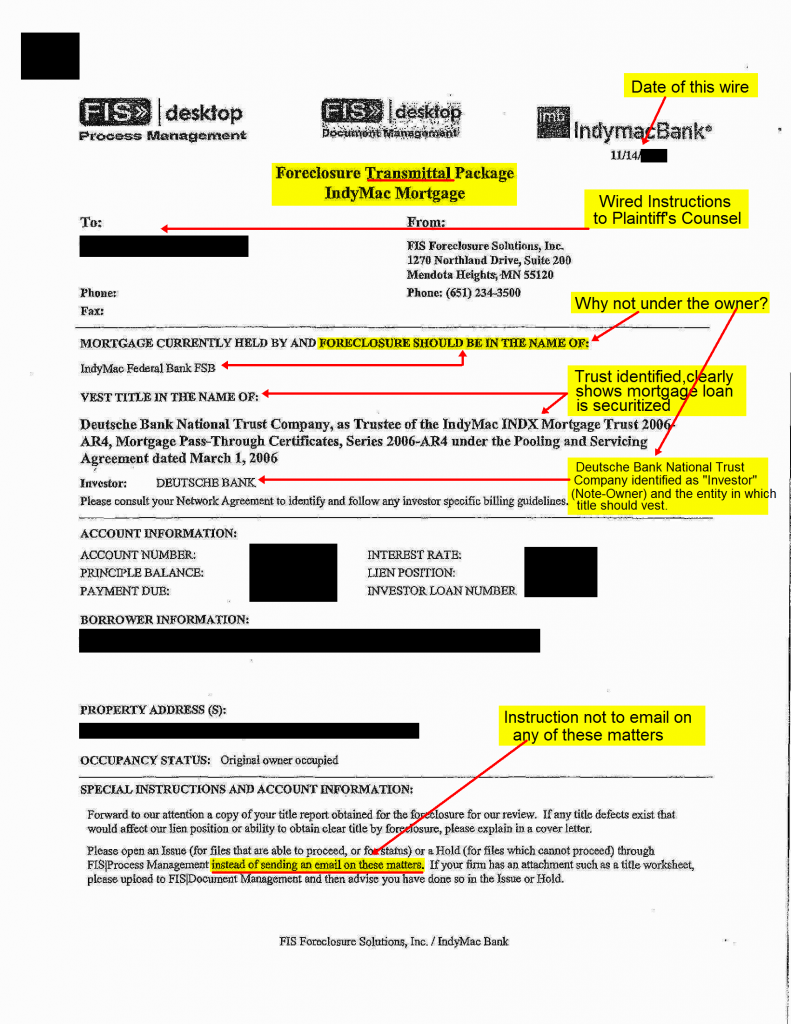




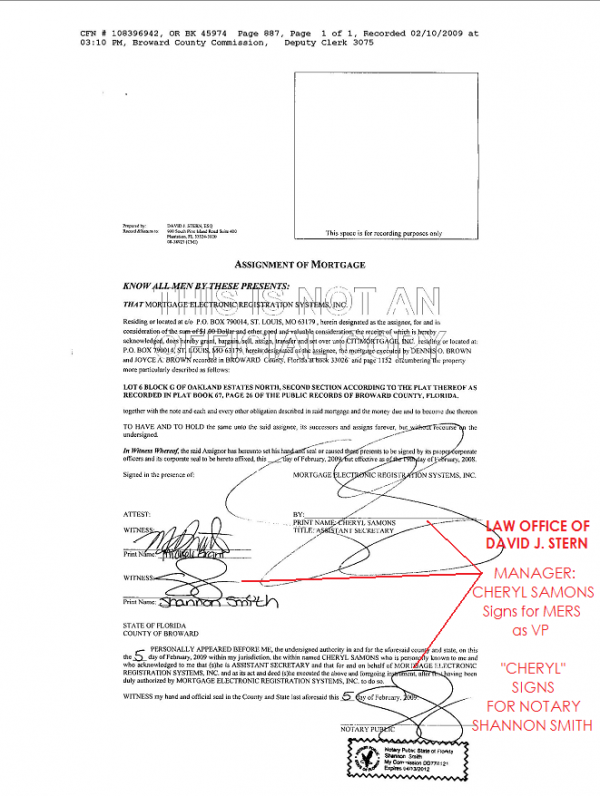
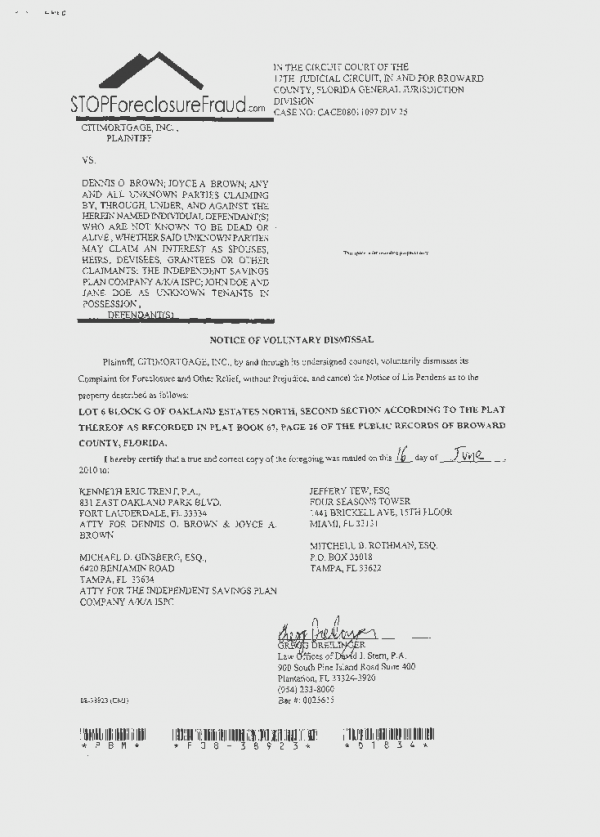
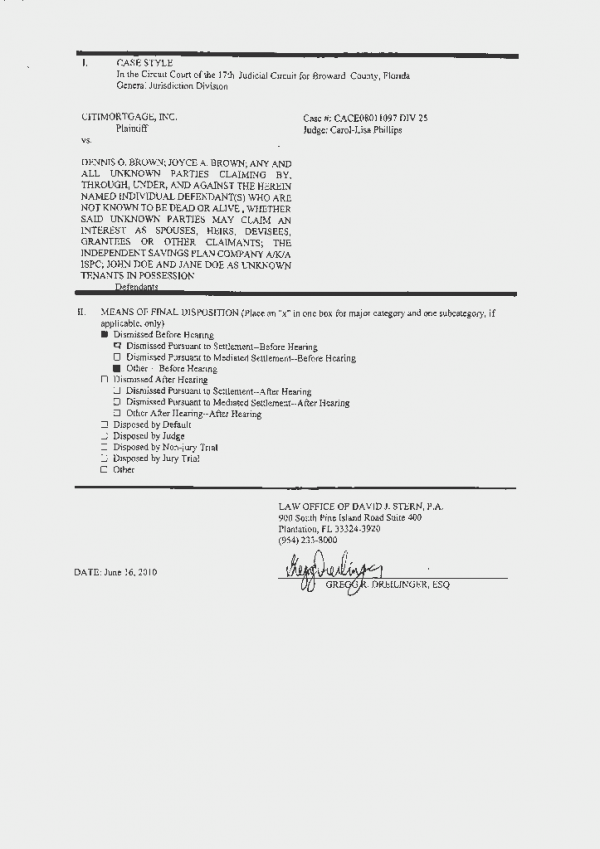

Recent Comments